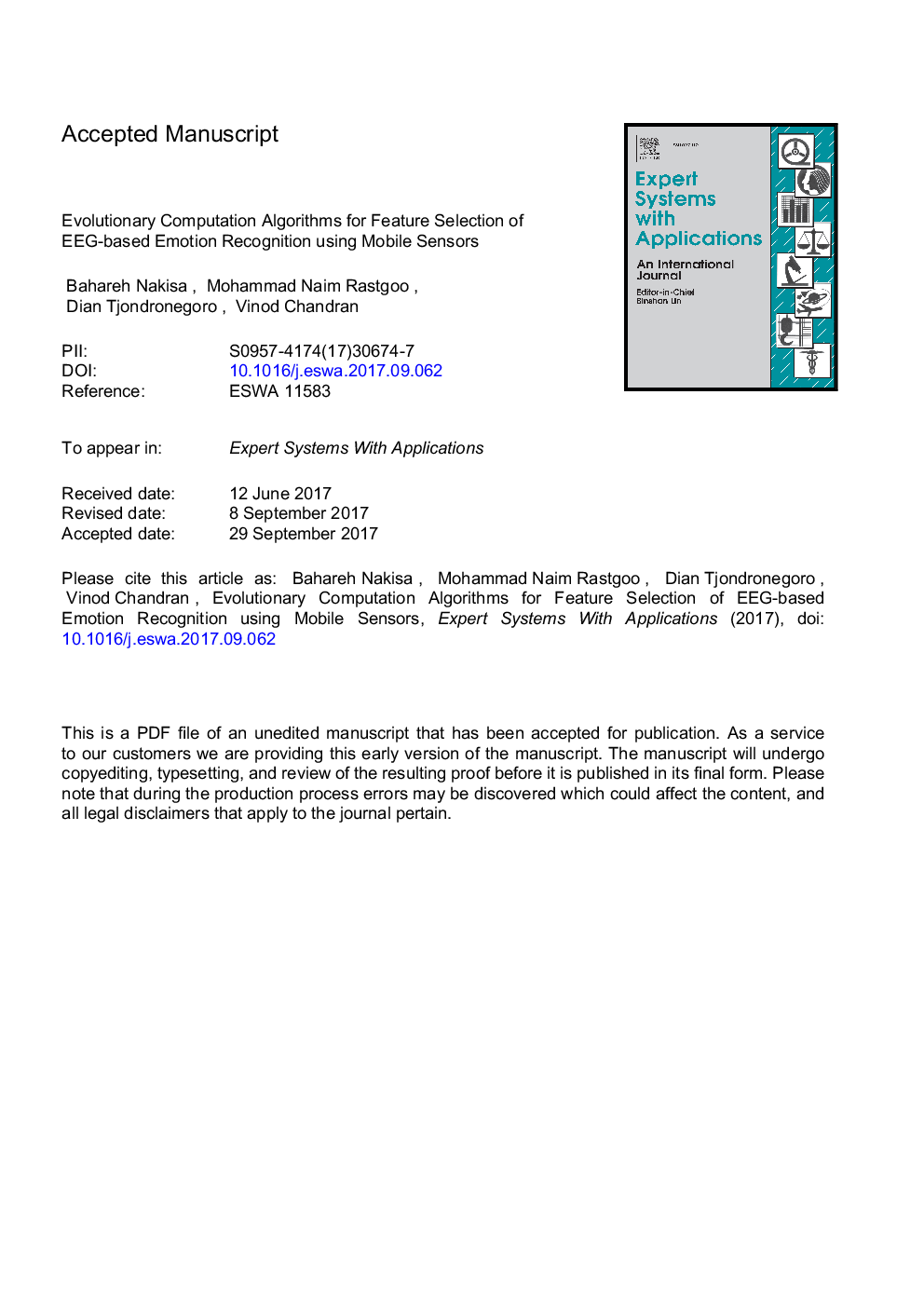| Article ID | Journal | Published Year | Pages | File Type |
|---|---|---|---|---|
| 4942904 | Expert Systems with Applications | 2018 | 27 Pages |
Abstract
There is currently no standard or widely accepted subset of features to effectively classify different emotions based on electroencephalogram (EEG) signals. While combining all possible EEG features may improve the classification performance, it can lead to high dimensionality and worse performance due to redundancy and inefficiency. To solve the high-dimensionality problem, this paper proposes a new framework to automatically search for the optimal subset of EEG features using evolutionary computation (EC) algorithms. The proposed framework has been extensively evaluated using two public datasets (MAHNOB, DEAP) and a new dataset acquired with a mobile EEG sensor. The results confirm that EC algorithms can effectively support feature selection to identify the best EEG features and the best channels to maximize performance over a four-quadrant emotion classification problem. These findings are significant for informing future development of EEG-based emotion classification because low-cost mobile EEG sensors with fewer electrodes are becoming popular for many new applications.
Related Topics
Physical Sciences and Engineering
Computer Science
Artificial Intelligence
Authors
Bahareh Nakisa, Mohammad Naim Rastgoo, Dian Tjondronegoro, Vinod Chandran,
